Material Memories
10 Feb - 20 May 2024
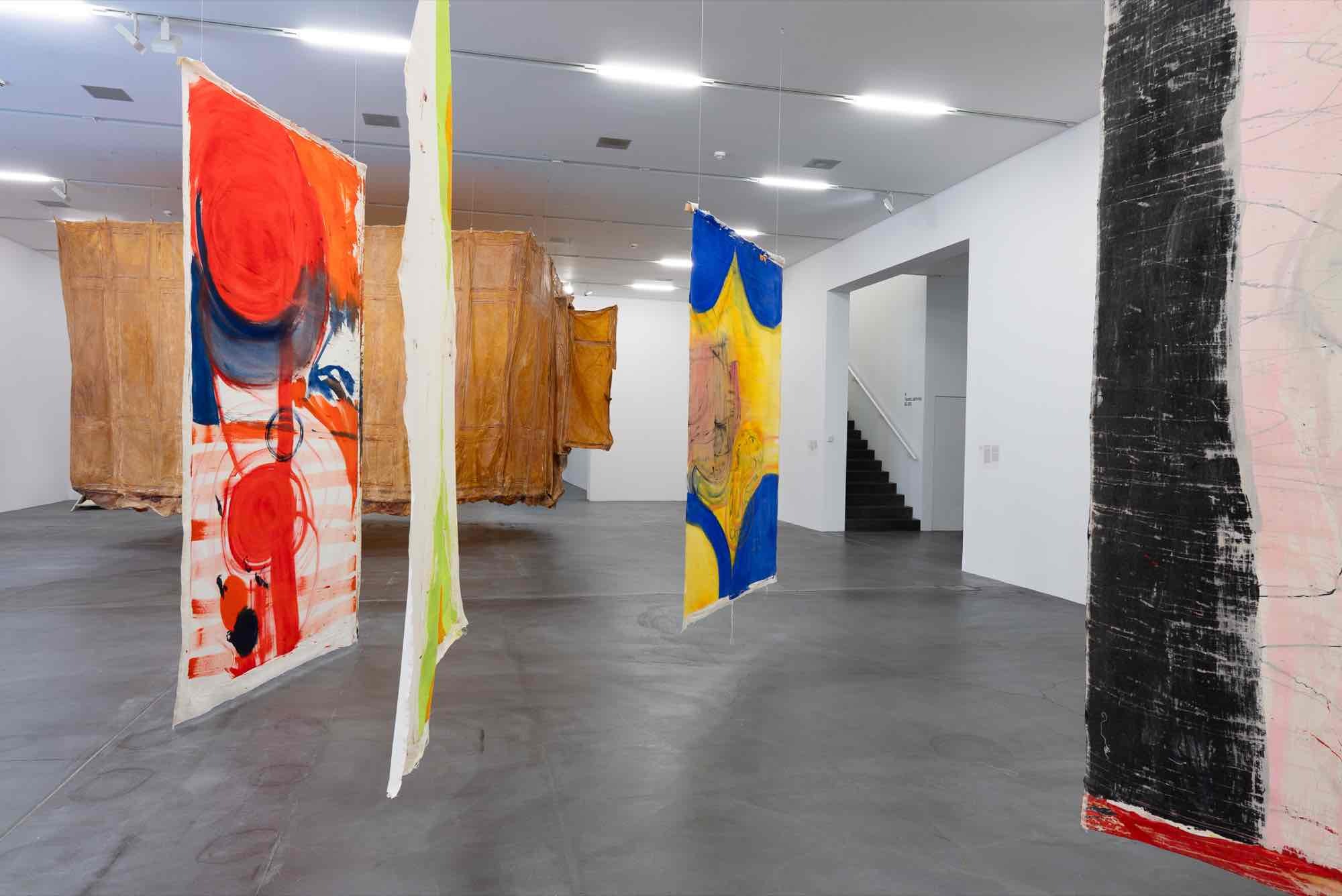
Vivian Suter, Ohne Titel, Mixed media on canvas, Heidi Bucher, Hautraum (Ricks Kinderzimmer, Lindgut Winterthur), 1987, Gossamer, fish glue, latex, bamboo, wire. Sammlung Migros Museum für Gegenwartskunst. Photo: Studio Stucky, copyright Vivian Suter and The Estate of Heidi Bucher

Vivian Suter, Ohne Titel, Mixed media on canvas. Sammlung Migros Museum für Gegenwartskunst. Photo: Studio Stucky, copyright Vivian Suter
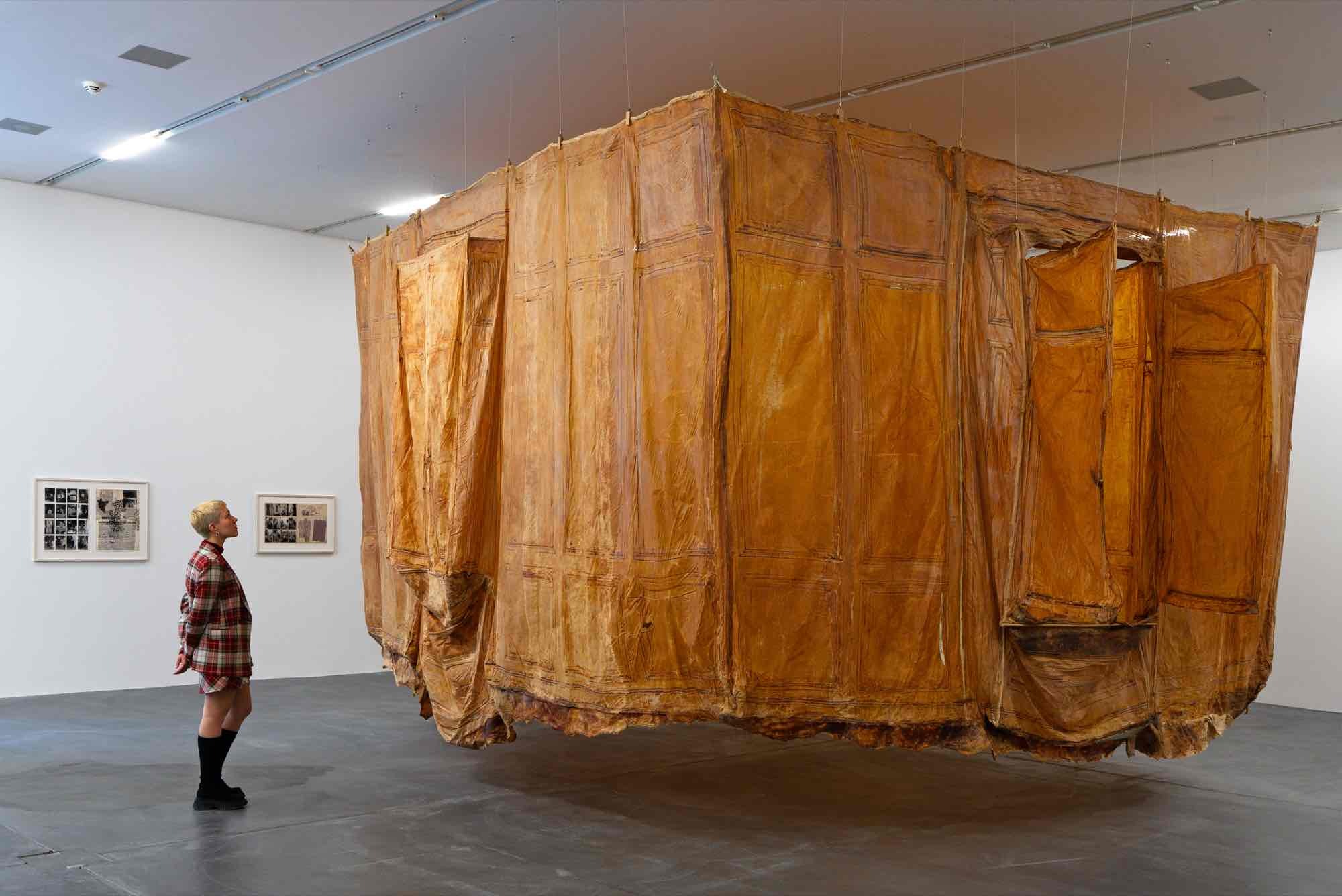
Heidi Bucher, Hautraum (Ricks Kinderzimmer, Lindgut Winterthur), 1987, Gossamer, fish glue, latex, bamboo, wire, Graciela Gutiérrez Marx, Mamablanca Treasure and Material Metamorphosis both 1982/2013, inkjet print on paper. Sammlung Migros Museum für Gegenwartskunst. Photo: Studio Stucky, copyright The Estate of Heidi Bucher and Graciela Gutiérrez Marx
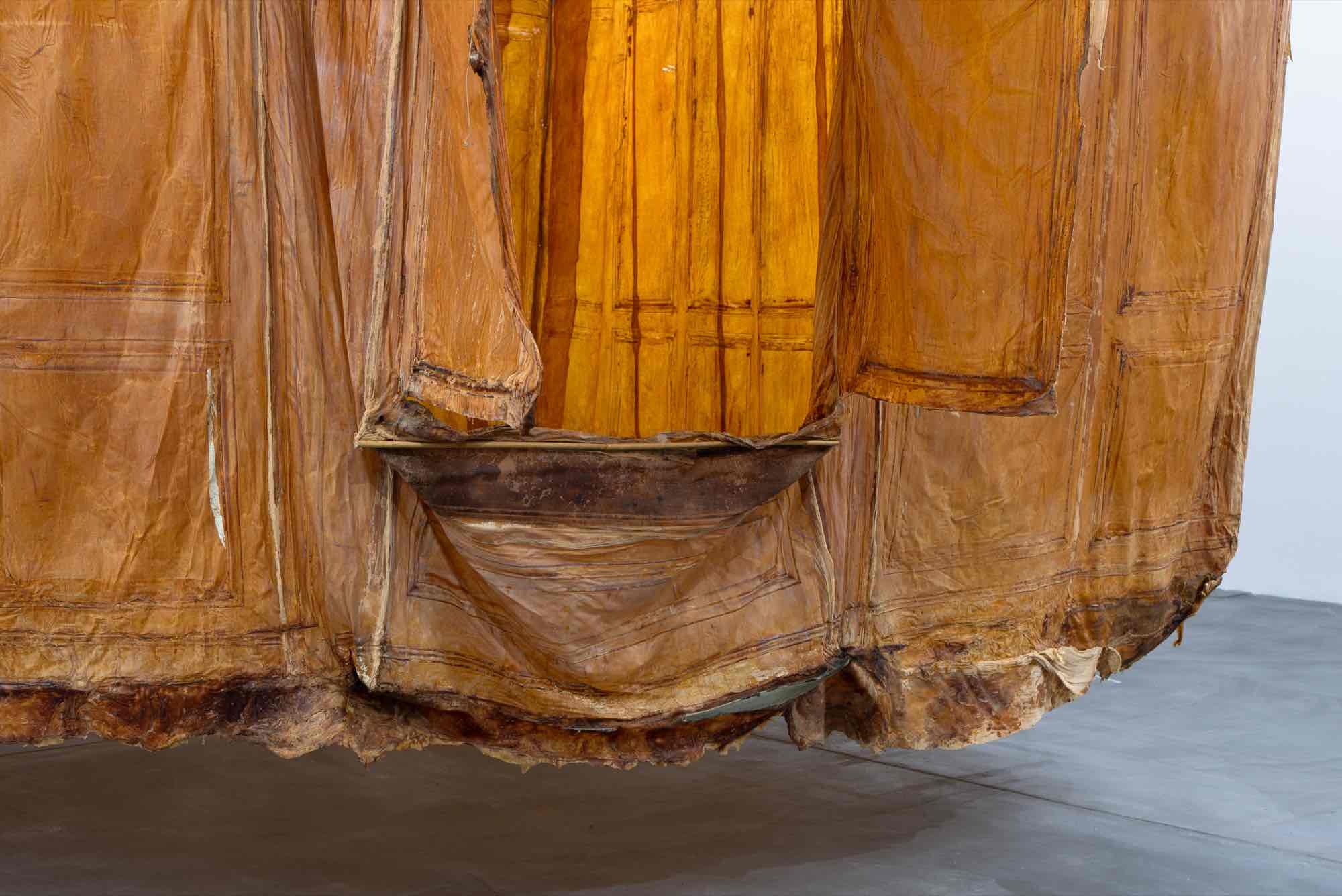
Heidi Bucher, Hautraum (Ricks Kinderzimmer, Lindgut Winterthur), 1987, Gossamer, fish glue, latex, bamboo, wire. Sammlung Migros Museum für Gegenwartskunst. Photo: Studio Stucky, copyright The Estate of Heidi Bucher
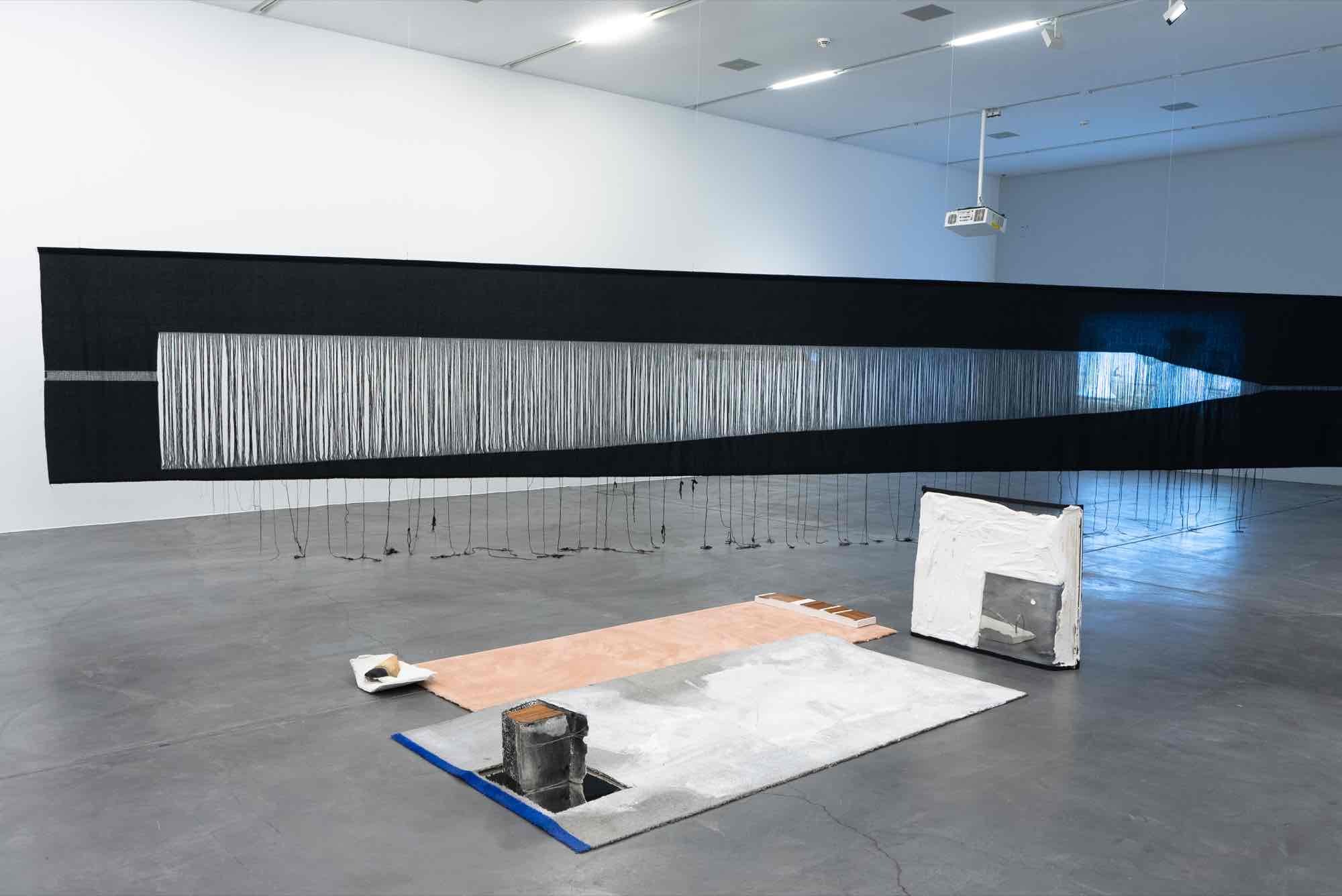
Exhibition view Thea Djodjadze, His Vanity Requires No Response, 2011, carpet, plaster, clay, metal, wood, mirror, paint, india ink, wire, Yael Davids, Vanishing Point, 2020, Carpet, plaster, clay, metal, wood, mirror, paint, india ink, wire, Heidi Bucher, Bodys- hells, 1972, single-channel video on monitor or projection (16 mm film transferred to digital, color, sound). Sammlung Migros Museum für Gegenwartskunst. Photo: Studio Stucky, copyright Thea Djodjadze, Yael Davids and The Estate of Heidi Bucher

Exhibition view Thea Djodjadze, His Vanity Requires No Response, 2011, Carpet, plas- ter, clay, metal, wood, mirror, paint, india ink, wire, Liz Magor, Good Shepherd, 2016, Polymerized gypsum, wool, paper, plastic bags, polyethylene sheet. Sammlung Migros Museum für Gegenwartskunst. Photo: Studio Stucky, copyright Thea Djodjadze and Liz Magor.
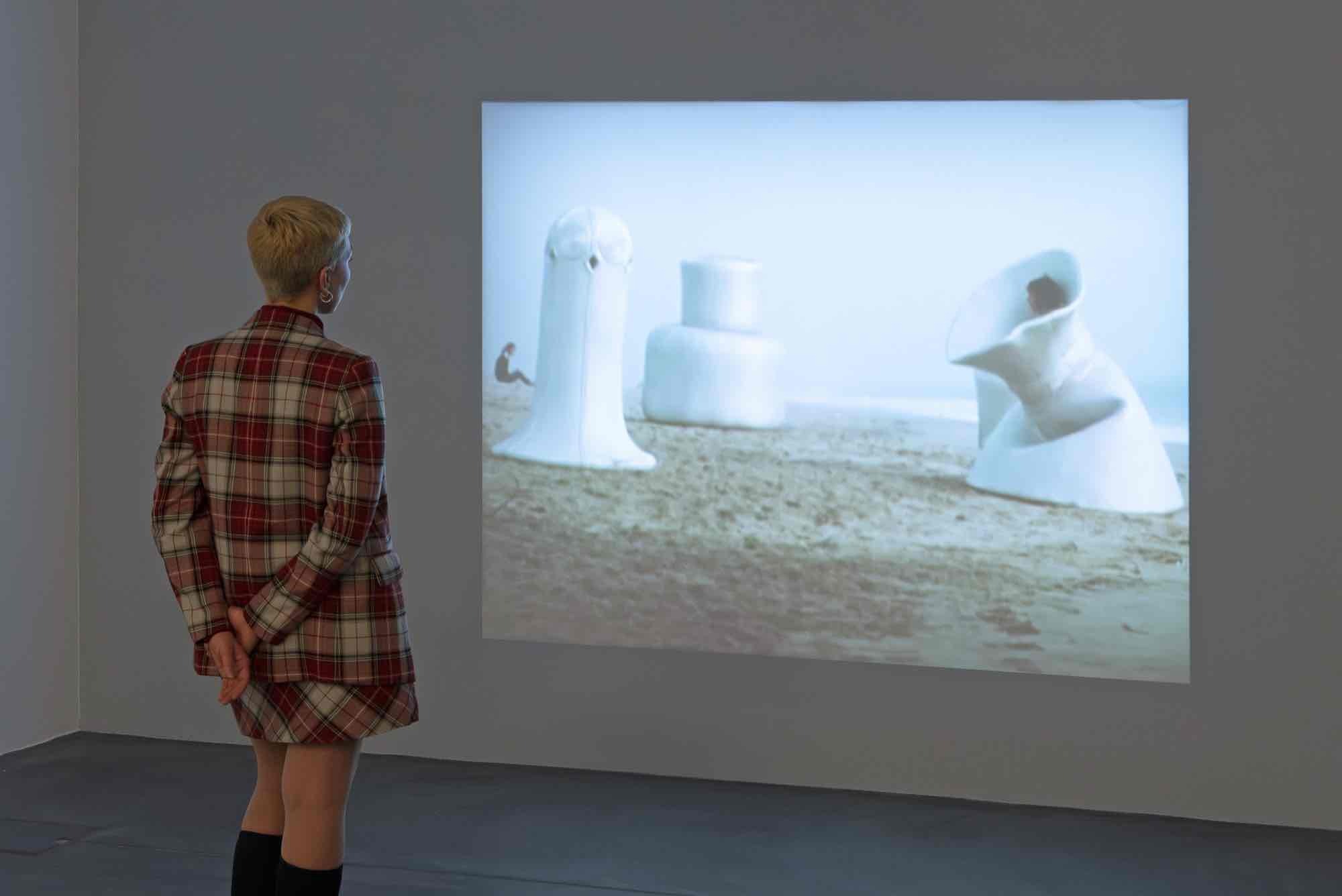
Heidi Bucher, Bodyshells, 1972, single-channel video on monitor or projection (16 mm film transferred to digital, color, sound). Sammlung Migros Museum für Gegenwarts- kunst. Photo: Studio Stucky, copyright The Estate of Heidi Bucher
Chapter 1 with works by Heidi Bucher, Yael Davids, Thea Djordjadze, Graciela Gutiérrez Marx, Kris Lemsalu, Liz Magor, Maria Pinińska-Bereś and Vivian Suter
«The pictures (…) were marked by water, mud and leaves. The turning point came when I accepted that my pictures were not destroyed, rather changed.» The artist Vivian Suter uses these words to describe what happened when her studio was flooded. It is precisely this idea of material as a repository of traces and memories that serves as the starting point for this exhibition: the approach to the selected works of the collection is via their material quality, and the concern is with how material is charged with meaning, and how raw materials can turn into art.
Physical material is the basic prerequisite for every artwork that manifests itself as an object. Since the 1960s artists have naturally drawn on impermanent or organic materials, have worked with materials from industry or integrated found objects into their works. As part of the artistic work process, these materials are merged, combined, formed, altered, coloured, liquified or solidified – provided they have reached a form that the artist judges to be ready. The exhibition thus examines the way in which meaning is inscribed into the material through the creative process – whether actual or symbolic It may be traces from the work done, or it may be remnants that bear witness to a performative act. In some cases, the material also stores imprints that come about due to uncontrollable factors, but are permitted – and so become part of the work itself. In other cases, a material or an object is charged with new meaning due to an action carried out, or the old one is over-written.
The exhibition brings together artistic positions from various generations and geographical contexts: common to all, however, is the engagement with unwritten material, onto which they inscribe their own meanings.
Curator: Nadia Schneider Willen
«The pictures (…) were marked by water, mud and leaves. The turning point came when I accepted that my pictures were not destroyed, rather changed.» The artist Vivian Suter uses these words to describe what happened when her studio was flooded. It is precisely this idea of material as a repository of traces and memories that serves as the starting point for this exhibition: the approach to the selected works of the collection is via their material quality, and the concern is with how material is charged with meaning, and how raw materials can turn into art.
Physical material is the basic prerequisite for every artwork that manifests itself as an object. Since the 1960s artists have naturally drawn on impermanent or organic materials, have worked with materials from industry or integrated found objects into their works. As part of the artistic work process, these materials are merged, combined, formed, altered, coloured, liquified or solidified – provided they have reached a form that the artist judges to be ready. The exhibition thus examines the way in which meaning is inscribed into the material through the creative process – whether actual or symbolic It may be traces from the work done, or it may be remnants that bear witness to a performative act. In some cases, the material also stores imprints that come about due to uncontrollable factors, but are permitted – and so become part of the work itself. In other cases, a material or an object is charged with new meaning due to an action carried out, or the old one is over-written.
The exhibition brings together artistic positions from various generations and geographical contexts: common to all, however, is the engagement with unwritten material, onto which they inscribe their own meanings.
Curator: Nadia Schneider Willen
